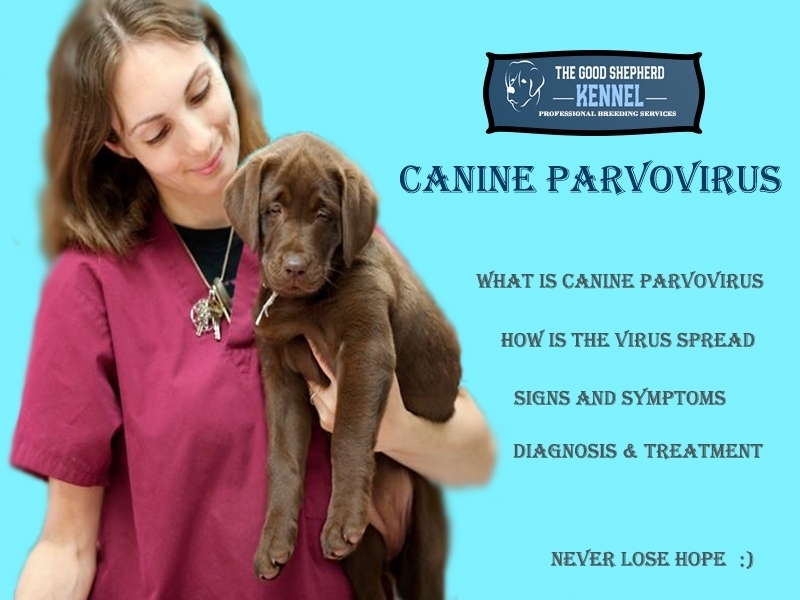Canine parvovirus type 2 (CPV-2) is a highly contagious and serious disease caused by a virus that attacks the gastrointestinal tract of puppies, dogs, and wild canids (e.g. foxes, wolves, coyotes). It was first identified in 1978 and is seen worldwide. It can also damage the heart muscle in very young and unborn puppies.
There are several variants of CPV-2 (CPV-2a, CPV-2b and CPV-2c), but they produce similar signs and symptoms in animals. However, CPV-2b is the most common variant in the US. CPV-2c was first confirmed in the U.S. in 2006, and is becoming the second most common variant.

CPV-2 is highly contagious and is spread by direct dog-to-dog contact and contact with contaminated feces (stool), environments or people. The virus can also contaminate kennel surfaces, food and water bowls, collars and leashes, and the hands and clothing of people who handle infected dogs. It is resistant to heat, cold, humidity, and drying, and can survive in the environment for long periods of time. Even trace amounts of feces containing parvovirus may serve as environmental reservoirs of the virus and infect other dogs that come into the infected environment. CPV-2 is readily transmitted from place-to-place on the hair or feet of dogs or via contaminated cages, shoes, or other objects.
All dogs are at risk, but puppies less than four months old and dogs that have not been vaccinated against canine parvovirus are at increased risk of becoming infected and ill. Puppies For Sale UAE
Dogs infected with the CPV-2 virus that are ill are often said to have “parvo.” and may exhibit the following:
Lethargy
Loss of appetite
Fever
Vomiting
Severe, often bloody diarrhea.
Vomiting and diarrhea can cause rapid dehydration, so do not delay in getting medical attention.
Most deaths from parvovirus occur within 48-to-72 hours following the onset of clinical signs. If your puppy or dog shows any of these signs, you should contact your veterinarian immediately.
CPV-2 infection is often suspected based on the dog’s history, a physical examination, and laboratory tests. Fecal testing can confirm the diagnosis. No specific drug is available that will kill the virus in infected dogs, and treatment is intended to support the dog’s body systems until the dog’s immune system can fight off the viral infection.
Treatment should be started immediately and consists primarily of efforts to combat dehydration by replacing electrolyte and fluid losses, controlling vomiting and diarrhea, and preventing secondary infections. Sick dogs should be kept warm and receive good nursing care. When a dog develops parvo, treatment can be very expensive, and the dog may die despite aggressive treatment. Early recognition and aggressive treatment are very important in successful outcomes.
Since CPV-2 is highly contagious, isolation of infected dogs is necessary to minimize spread of infection. Proper cleaning and disinfection of contaminated kennels and other areas where infected dogs are (or have been) housed is absolutely essential to control the spread of parvovirus. The virus is not easily killed, so consult your veterinarian for specific guidance on cleaning and disinfecting agents that may help with the elimination of the virus.
We are the Registered & Licensed online Pet Shop in Dubai. a group of dog lovers with over 10 years of experience in breeding exceptional quality dogs. Our passion for animals drives us to maintain the highest possible standards and share our love with families who will love and care for their new pup as we do.
